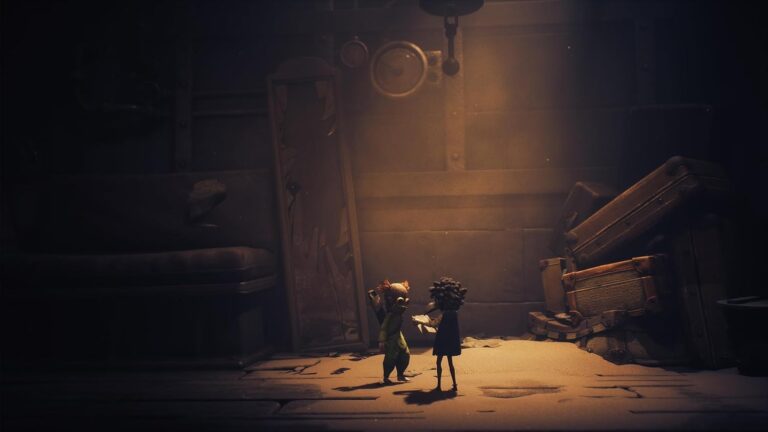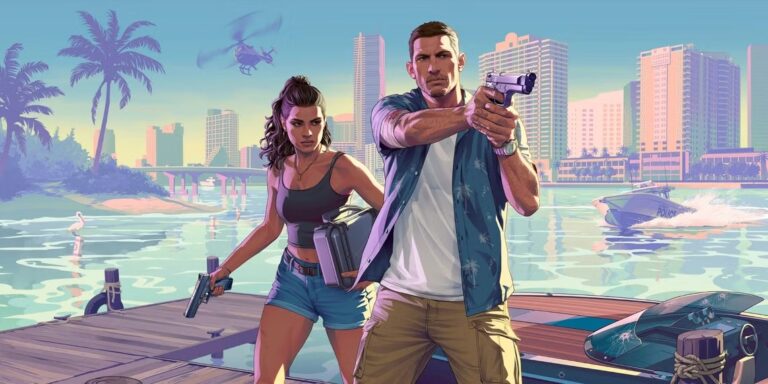
STALKER 2: Heart of Chernobyl, the ambitious sequel by GSC Game World is getting closer to its release date. After getting some hands-on time for our preview back in June, the developer has released even more details about what awaits you in the Zone, the hostile and desolate restrictive area around Chernobyl.
After a series of short trailers, the latest developer deep dive walks us through a lengthy quest in the swamp area of the open-world map.
Here’s everything we learned from it, as well as details we’ve gathered from previous presentations.
A massive open world with almost no barriers
In case you were wondering, yes, STALKER 2 features a seamless open world to explore. It consists of twenty different regions, each with its own array of residents, distinct architecture, nature, and of course, anomalies. In the latest developer deep dive, GSC said there are “almost no barriers” that would prevent the player from going somewhere. From the sounds of it, unless an area is restricted by, say, a main mission, you’ll be free to explore to your heart’s content.

This freedom is deliberate. The developer wants to embrace the feeling of loneliness and anxiety that comes from embodying a Stalker. From a design perspective, the sequel allows you to procrastinate on the main storyline as much as you like. If you’d rather pick a random direction and see what you can find, that’s a viable path as well, expanding on the spirit of previous games in the series.
The team has focused on conducting thorough research in terms of references and studies of the real-life locations reimagined in-game to create intricate and distinct environments. Exploration continues to be a vital aspect of the experience, too. There are weapons, equipment, attachments, and upgrades that can’t be obtained from story progression but from examining every nook and cranny you come across.
Past traditions meet welcome additions
STALKER: Shadow of Chernobyl, the first entry of the series was released back in 2007. Many of the design and genre conventions that were standard almost two decades ago have been iterated since. Based on our experience with the hands-on demo during Summer Game Fest, as well as the footage available, it doesn’t take long to see the sequel is closer to a modern first-person shooter in terms of presentation and mechanics. Thankfully, this doesn’t mean that it doesn’t retain what makes STALKER unique.
Most of the trailers emphasize on the game’s cutscenes, and for good reason. There are nearly three hours of cutscenes, all of which involve rigorous motion capture and voice acting work, totaling more than 43 scenes scattered throughout the game. GSC has clarified that you will not be able to see all of the content or meet everyone within one playthrough. Depending on your choices, you’ll meet different people and take on their quests.
There’s no leveling system in STALKER 2. Instead, your progress is reflected in the ever-increasing knowledge you obtain of each region and the dangers surrounding them. GSC aims to provide an experience that balances punishment with a sense of reward. In order to survive out there, there are 35 weapons in total, with potential for customization thanks to different upgrades and attachments that affect their feel and use.
Aside from dealing with enemies and anomalies, the protagonist will need food and sleep. If you leave these needs unattended for too long, they’ll become issues that will affect your efficiency. Weight, for example, is still an important part of the experience. Becoming overburdened will get in the way of dynamic movement, forcing you to prioritize cargo on the go and not get too attached to what’s in your backpack during extensive expeditions.
The dangers lurking around the Zone
Whether or not you have previous knowledge of the enemies that lurked in the Zone in previous games, STALKER 2 is bound to surprise you. The revamped AI system in place makes it so enemies don’t receive hints about your whereabouts at random. Instead, such instances happen more organically. If they see you, they’ll know you’re around. Go into hiding, and the AI will begin to hypothesize about where you might be. While it can’t guess the exact location, it’ll start making assumptions. After running through all of them, it’ll begin to hunt you down.

The latest developer deep dive, while only focusing on a single area, served as a varied showcase of what to expect in terms of enemies. The pseudodog is a mutated canine that is joined by a pack of phantoms. An empty cathedral infested by rats became the lair of Bayun the Cat, a creature that imitates the voice of stalkers crying for help, attacking anyone who is lured by its trickery.
You can expect plenty of encounters against other humans, but of course, there are also zombies. These will always get up no matter how many times you kill them—unless you go for a classic headshot. This might not always be easy, however. During the developer deep dive, a group of zombies is joined by a controller, a humanoid who slowly kills you from a distance while also raising your psi-radiation with each attack.
Other enemies, such as the previously domesticated flesh creatures, or the classic bloodsucker, are also present in the sequel. Of course, some challenges will be harder to deal with, such as nature itself, as you can be surprised by lightning strikes that can either work in your favor or quickly tamper with your plans, forcing you to find refuge.
Factions brought to life
Witnessing factions at work and organized patrols roaming around the Zone in STALKER is one of the trademark moments you can experience in the series. GSC is doubling down on this feature, making for more dynamic encounters and behaviors. For example, factions can sometimes change their leader, break up, or simply do something that will seem strange to the player, going against their established ideologies when an event divides them.

You can expect each faction to have a much more grounded presence in the world at large, as well as set roles for its members within their assigned locations. Loners, even in their permanent camps, prefer to remain alone or in small groups. Duty members are committed to pre-military discipline and order. There are also Monolith camps as well, populated by its cult religious followers.
As you dive deeper into STALKER 2, you’ll begin to learn more about factions. For the Monolith followers, for example, it’s known that after all psi-emission sources went down, most adepts woke up and couldn’t hear the voice of the Monolith anymore.
There’s quite a lot to look forward to in this ambitious sequel. As told by the developers in the deep dive walkthrough, the intention wasn’t to make the game easy, as doing so would go against the realism that the team is pushing for. If the player can easily make mistakes, can’t die, or get hit points regenerated, it wouldn’t be a STALKER experience. Despite a plethora of quality-of-life additions, such as a weapon wheel and more refined mechanics, the Zone will prove to be as challenging as it’s always been, if not more.
STALKER 2: Heart of Chernobyl releases on November 20 on the Epic Games Store.









